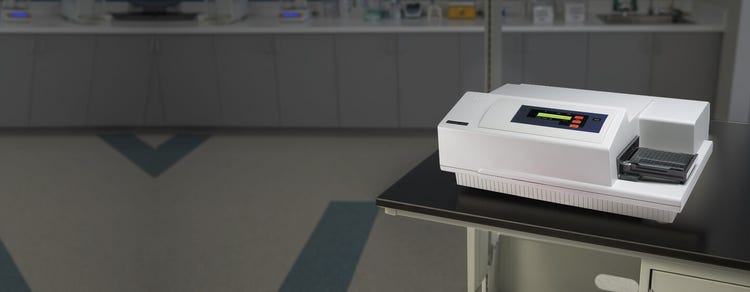

Gemini XPS and EM Microplate Readers
Fluorescence detection without filters
Multi-wavelength measurement without filters
The Gemini™ XPS and EM Microplate Readers with dual monochromators provide a flexible environment to determine the optimal excitation and emission settings for fluorescence intensity assays. Multiple-point well scanning optimizes cell-based assay sensitivity. Comparison of relative fluorescence units (RFUs) between samples is allowed by a unique calibration against an internal standard. Temperature-sensitive reactions are monitored with consistent temperature regulation from ambient to 45°C.

Eliminate changing out filters
Eliminate the need for identifying, purchasing, and changing out filters. Dual monochromators provide excitation and emission wavelength selection between 250-850 nm.

Measure more accurately
Well scanning reports fluorescent measurements from a single point in the center of a microplate well to multiple points across a tissue culture well.

Avoid losing high signals
Avoid losing high signals to detector saturation and find the correct reader settings with our patented Auto PMT Optimization System.

Gemini
Features

Top-read capability
The top-reading Gemini XPS Microplate Reader measures fluorescence on a variety of sample formats from 6- to 384-well microplates in endpoint, kinetic, spectral scan, and well-scan modes.

Top- and bottom-read capability
The top- and bottom-reading Gemini EM Microplate Reader measures fluorescence on a variety of sample formats from 6- to 384-well microplates in endpoint, kinetic, spectral scan, and well-scan modes.
Latest Resources
Featured Applications
Customer Breakthrough
Applications of Gemini XPS and EM Microplate Readers
Specifications & Options of Gemini XPS and EM Microplate Readers
*Using lowest settings and speed read when available.
Download Data Sheet
